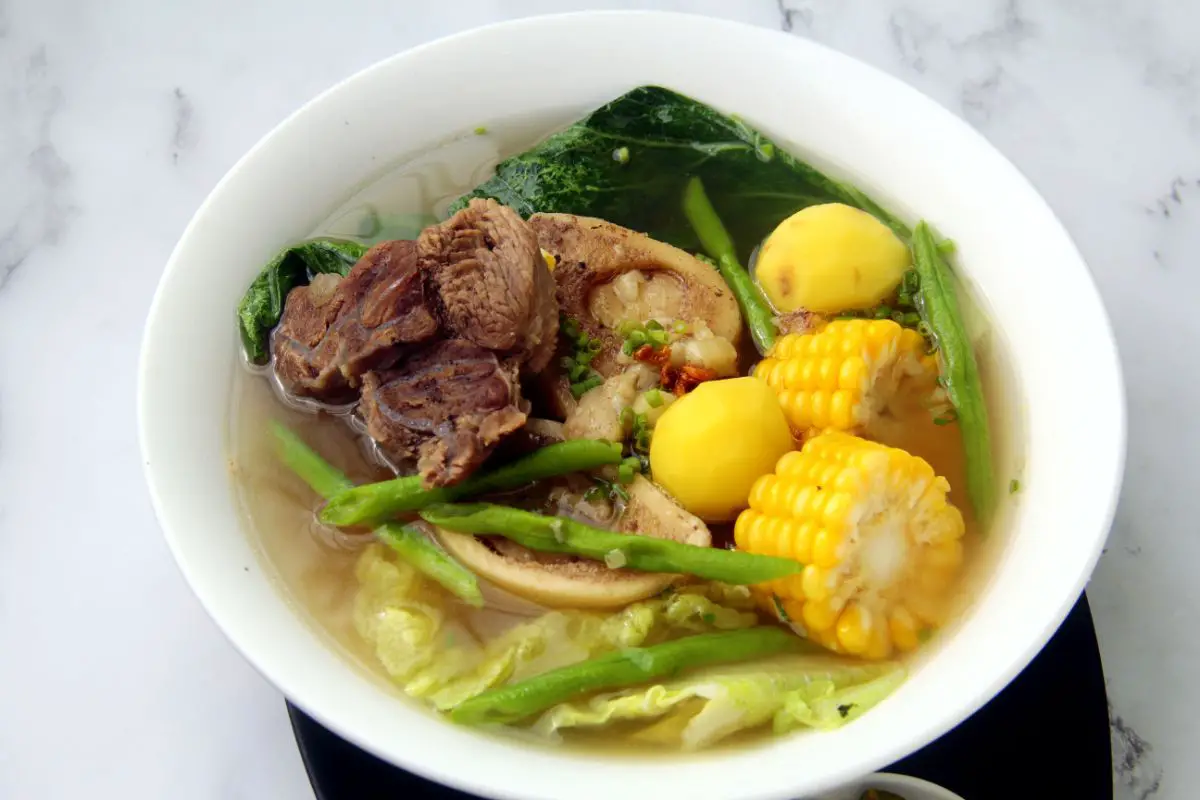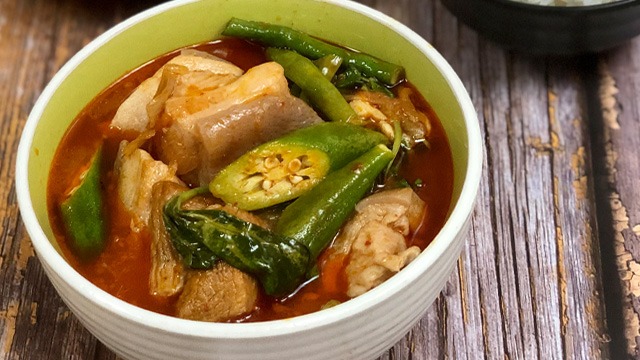Try Out Iconic Filipino Food Recipes Everyone Loves.
Enjoy Standard Filipino Flavors With Easy-To-Follow Recipes
Exploring standard Filipino cuisine supplies a special opportunity to engage with an abundant tapestry of tastes and social stories. Each meal, from the renowned adobo to the vivid sinigang, informs a tale that shows the Philippines' diverse cooking heritage. By accepting easy-to-follow dishes, anybody can recreate these cherished meals in your home, promoting links with friends and family via shared experiences. Nevertheless, comprehending the necessary active ingredients and techniques is essential for attaining genuine preference. As we check out these cooking traditions, one may wonder exactly how to best bring the warmth of Filipino friendliness to their very own table.

Review of Filipino Cuisine
Checking out the lively tapestry of Filipino cuisine reveals a rich social heritage affected by various historical and geographical factors. The Philippines, an archipelago of over 7,000 islands, flaunts a diverse variety of flavors and cooking strategies. The nation's cooking landscape is formed by native traditions and the impacts of colonization, trade, and migration. Therefore, Filipino cuisine is an unique mix of Malay, Spanish, Chinese, and American components.
Rice functions as the keystone of Filipino dishes, frequently come with by an assortment of vegetables, meats, and seafood. Making use of bold tastes is a characteristic of the cuisine, with active ingredients such as garlic, onions, ginger, and soy sauce playing pivotal roles. The emphasis on public dining shows the Filipino culture of friendliness and household ties.
Street food likewise plays a significant role in the cooking scene, showcasing regional components and imaginative cooking methods. As the Philippines remains to welcome globalization, the blend of traditional and modern impacts can be seen in contemporary Filipino meals, additionally improving its cooking identity. Filipino food recipes. Overall, Filipino cuisine is a testament to the country's background, society, and dynamic spirit
Must-Try Conventional Meals
Filipino food is ideal experienced with its typical meals, each offering an one-of-a-kind insight into the nation's diverse cooking heritage. Amongst the must-try meals is Adobo, a mouthwatering stew typically made with hen or pork, seasoned in vinegar, soy sauce, and garlic prior to being slow-cooked to excellence. Its abundant and tasty taste account stands for the heart of Filipino home cooking.
An additional iconic recipe is Sinigang, a sour soup frequently prepared with tamarind, tomatoes, and different vegetables. This meal can feature pork, shrimp, or fish, and is treasured for its rejuvenating preference and heating high qualities.
Lechon, a whole baked pig, is a centerpiece at Filipino celebrations, recognized for its crispy skin and tender meat. It embodies the cheery spirit of Filipino gatherings.
For those yearning something pleasant, Halo-Halo is a fascinating dessert combining crushed ice, sweetened fruits, jellies, and topped with leche flan and purple yam.
Each of these typical recipes encapsulates the significance of Filipino society, inviting any individual to enjoy the vivid tastes and abundant background that define the archipelago's cooking landscape.
Step-by-Step Recipes
Food preparation genuine Filipino recipes in the house can be an improving experience that brings the vibrant tastes of the Philippines into your kitchen area. With a variety of conventional recipes to select visit this site from, utilizing step-by-step dishes enables both newbie and seasoned chefs to grasp the methods and tastes indispensable to Filipino cuisine.
Begin by choosing a dish that intrigues you, such as adobo, sinigang, or lumpia. Each dish often consists of a thorough ingredient listing adhered to by clear directions, guiding you with the food preparation process. Beginning with preparation, which may entail marinating proteins, cutting vegetables, or measuring spices. This foundational step makes sure a smooth cooking experience.
As you proceed, pay very close attention to food preparation methods unique to Filipino cuisine, such as sautéing (ginisa) or stewing (nilaga) These approaches can dramatically boost the deepness of taste in your dishes. Timing is vital; comply with the recommended food preparation times to accomplish the best structure and taste.
Crucial Components and Tips
Often, the secret to understanding Filipino cuisine lies in understanding and making use of essential components that specify its distinct tastes. Central to numerous dishes are staples like soy sauce, vinegar, garlic, and ginger, which add to the unique equilibrium of mouthwatering, sour, and pleasant notes. Soy sauce acts as a base for sauces and sauces, while vinegar, specifically walking stick vinegar or coconut vinegar, imparts a zesty brightness that is vital in dishes like adobo.
Rice is an essential component of Filipino dishes, commonly offered together with main programs to absorb tasty sauces. For a touch of credibility, choose jasmine or long-grain rice. Furthermore, using fresh produce such as tomatoes, green beans, and eggplants improves the recipe's vibrancy and nutritional value.
Do not overlook the relevance of herbs and spices, such as bay leaves, lemongrass, and chili peppers, which boost the flavor account. go When cooking, keep in mind that persistence is vital-- enabling components to blend with each other results in richer flavors. Accept the method of tasting as you go; this will enable you to adjust spices and achieve the best equilibrium that defines Filipino food.
Serving and Delighting In Filipino Meals
Comprehending the nuances of Filipino cuisine expands past prep work and components; it includes the way meals are served and taken pleasure in. The Filipino eating experience is characterized by common sharing, advertising a feeling of togetherness and party. Typically, find this dishes are offered in big portions, allowing restaurants to partake in a variety of flavors.
Rice, a staple in Filipino meals, is usually offered as the structure whereupon the other meals remainder. Coming with viands, such as adobo, sinigang, or lechon, are put in the center of the table, inviting guests to serve themselves. Filipino food recipes. This method not just fosters a loosened up atmosphere but also encourages conversations and connections amongst restaurants

Conclusion
In final thought, typical Filipino food offers a rich tapestry of flavors and cultural relevance, welcoming expedition via its diverse meals. The easy-to-follow recipes offered help with the preparation of legendary meals, fostering a much deeper recognition for the active ingredients and strategies entailed. Emphasizing common eating, these culinary techniques enhance family connections and advertise the warmth of Filipino friendliness. Involving with this dynamic food not just improves the dining experience but also protects and celebrates the heritage of the Filipino individuals.